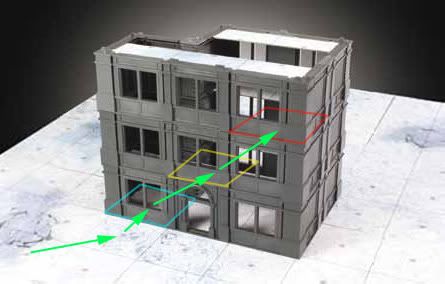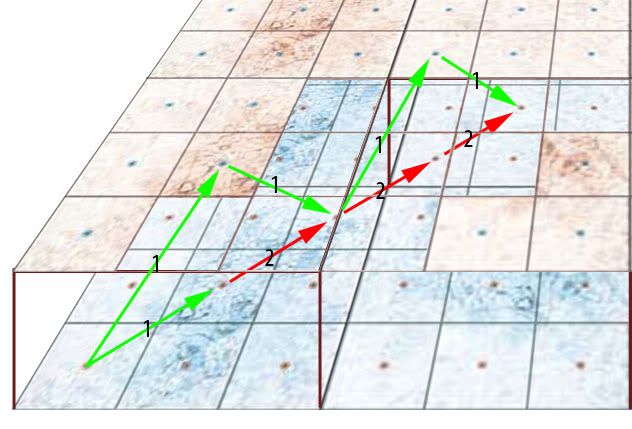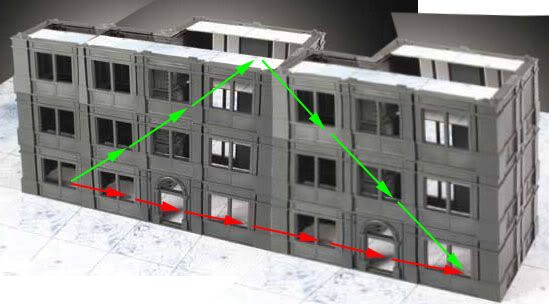posted this elsewhere, but realized, it's really rules question...
Jump ignores terrain, or so I understand... so ...
1. do Jump troops have to enter a building on the first floor? or can they make a diagonal up movement to enter on the second?
2. can Jump troops enter through a wall (ignoring terrain)
3. can jump units simply land on the roof without entering the building?


